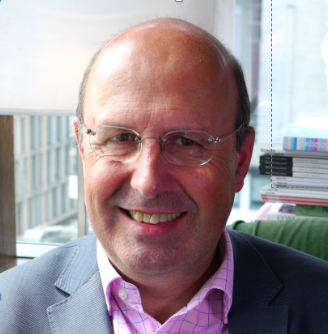You can sign up to our LinkedIn newsletter here.
As you start to engage with clients as a Portfolio Executive one of the key tools you need is a diagnostic to enable you to demonstrate the value you bring as early as possible in a relationship.
This article explores the three powerful way a diagnostic works for you:
1) Enables you to do some work for the client requiring low commitment of time and money by them.
2) Gives you a simple, easily defined, product that you can sell at the beginning of your sales cycle with a client
3) Set out a plan for the client of what you are going to do together.
If you just go to a potential client and say that you want to be a portfolio executive looking after, for example, their marketing function, then they may not recognise there is a compelling reason to engage a part-time Head of Marketing. They may think they can leave marketing to the person who does the website, runs events or handles sales.
You are offering them a bite sized engagement, at a fixed price, so that they can benefit from a small amount of your time. For them this is a ‘test purchase’. In turn, you prove yourself as a trusted advisor and understand the scope of their needs.
The Power of the Capability Maturity Model
I recommend a diagnostic based on the Capability Maturity Model. It may be tempting to use an ISO standard, but this is complete overkill for now. Capability maturity assesses the maturity of the processes in a business function. What does maturity mean?
It is the extent to which a process area is:
Level 1 Ad hoc: any success relies on the extraordinary efforts of individuals
Level 2 Emergent: there is some level of consistency in some areas
Level 3 Standardised: there is a standard approach, universally and consistently applied.
Level 4 Measured: metrics are regularly and consistently captured to establish the effectiveness and efficiency of the process area
Level 5 Optimising: innovation, change and review of processes ensures continuous improvement
Historical aside: the Chicago based Software Engineering Institute originated the Capability Maturity Model to protect the American Department of Defence from failing procurement of military software services.
Grouping into Themes
To develop a diagnostic for yourself consider between five and nine themes that relate to the function you want to lead. A finance director, for example, may include “Purchase to pay” as a theme. [“Purchase to pay” is all aspects of the procedure to buy and pay for products or services on behalf of the organisation.] The complexity and sophistication of the process will vary depending on the context, but we are focussed on the extent to which it is mature. You could have a straightforward process in a smaller organisation that is completely standardised, has metrics for efficiency and effectiveness and with well-established mechanisms for optimisation. In a much larger organisation, you may have a process that covers the same scope but needs to be much more sophisticated. However, this more sophisticated process has no metrics is applied inconsistently.
Conducting the Diagnostic
When we conduct our diagnostic of a process area, we are less concerned with how something is done. For us, what is important, is the level to which an organisation is actively standardising, measuring and optimising the capability of the process area. This means you can go into an organisation and talk to the CEO, the current head of the relevant process area, other people operating in that area and perhaps one or two key stakeholders that rely on this particular business function. With a series of structured interviews, that might take you a total of four to eight hours, you can establish for each of those themes the level of capability maturity. You can apply your knowledge, skill and experience to understand context of your client and suggest how to prioritise those themes that need a higher level of maturity. So, for example, it might be that, for the “Purchase to pay” area, because it is a small organisation, the CEO is the only person who can make payments and authorise commitments. You may find that the standardised process always requires a quote and there is always an invoice before payment. This is Level 3. You could suggest metrics for timeliness of payment when due, accuracy of payment and frequency of proof of delivery to bring it to Level 4. On the other hand, if it is completely random: sometimes things are bought on credit card or sometimes using Paypal, sometimes there are invoices, sometimes there are just receipts, there is not always VAT captured and it is all a bit of a mess then this is Level 1.
Moving to Level 3 could be a high priority if the business is a retailer of some kind. However for a consultancy organisation that does not purchase very much (they might pay the rent and have a bit of travel but that is about it) it would be a very low priority. It could be a much higher priority that they bill their clients, check the credit and ensure that they get paid. You would want them to build maturity in the “Order to cash” area to have a massive positive impact on the client’s cash flow.
Conclusion and next steps
It will require some careful thinking and a structured approach but you can readily build a Capability Maturity Model for your area of expertise and apply it as a diagnostic to clients. Such a diagnostic will add real value to the way you engage build new relationships and help you codify your knowledge, skills and experience in a powerful way.
In a previous article, I explained how to use a Capability Maturity Model based diagnostic as a sales tool.

Charles McLachlan is the founder of FuturePerfect and on a mission to transform the future of work and business. The Portfolio Executive programme is a new initiative to help executives build a sustainable and impactful second-half-career. Creating an alternative future takes imagination, design, organisation and many other thinking skills. Charles is happy to lend them to you.
